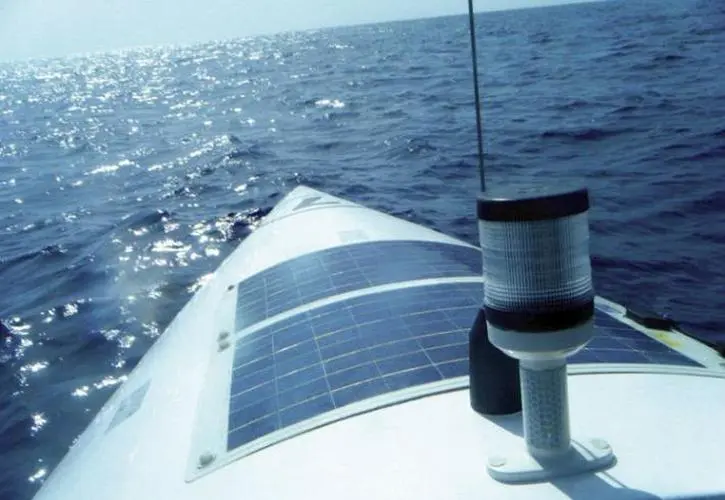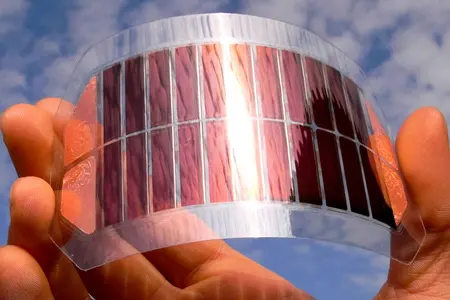
Quantum Efficiency Tester
PL/EL Integrated System
PV-Reflectumeter
3D Confocal Microscope
In-Line Four Point Probe Tester
Four Point Probe Tester
In-Line Thin Film Thickness Tester
Raman Spectrometer
FTIR Spectrometer
Spectrophotometer
Automatic Spectroscopic Ellipsometer
Contact Resistance Tester
Ultra depth of field 3D microscope
Auto Visual Tester
VMM PV Vision Measuring Machine
Solar Cell Horizontal Tensile Tester
Steady State Solar Simulator for Solar Cell
Solar Cell UV Aging Test Chamber
Solar Cell Comprehensive Tensile Tester
Visual Inspection Tester
Wet Leakage Current Tester
PV Module EL Tester
PV Module UV Preconditioning Chamber
Steady State Solar Simulator for PV Module
Current Continuous Monitor
Potential Induced Degradation Test
Bypass Diode Tester
LeTID Test System
Reverse Current Overload Tester
Impulse Voltage Tester
Hipot Insulation Tester
Ground Continuity Tester
Hipot Insulation Ground Tester
Damp Heat Test Chamber
Humidity Freeze Test
Thermal Cycle Test Chamber
Dynamic Mechanical Load Tester
Static Mechanical Load Tester
Hail Impact Tester
Robustness of Termination Tester
Module Breakage Tester
Cut Susceptibility Tester
Peel Shear Strength Tester
Universal Testing Machine (Single-arm)
Universal Testing Machine (Double-arm)
Glass Transmittance Tester
Acetic Acid Test Chamber
EVA Degree of Crosslinking Test System
Junction Box Comprehensive Tester
Drop ball tester
Semi-automatic scanning four-probe tester
Stylus Profilometer
Maximum Power Point Tracker
Perovskite Glass Transmittance Tester
Perovskite P1 Laser Scribing Multifunctional Testing Machine
Perovskite Online PL Tester
Perovskite Online Sheet Resistance Tester
Online Perovskite Film Thickness Tester
Perovskite Process Inspection Workstation
Portable IV Curve Tester
Portable EL Tester
Portable Thermal Imaging Tester
Solar Module Multi-Channel Testing System
PV Inverter Power Quality Tester
Drone EL Tester
IV Tester
IVEL Cell Sorting Machine
Application and Selection of Flexible Solar Panels
Date : 2024-01-15Views : 115
In previous issues, we introduced the working principle, advantages and disadvantages, and main types of flexible solar cells. We also mentioned that the difference between them and traditional solar panels is that they are bendable and lighter. Because of these two characteristics, thin film solar cells have more applications. This issue of Millennial Solar will introduce the application direction of this type of solar cell and how to choose a suitable flexible solar cell.
Main Application
Camping Trip: Use as a power bank on your tent. They can also be safely rolled and stored when not in use. (These are also called camping solar panels)
Long Trips in an RV: Of course, you can also bring a noisy generator to meet your power needs, or just install flexible solar panels on your RV for a peaceful drive!
Perfect for Boating/Fishing/Yachting Trips: Ditch the generator and let the fish be attracted by the serenity of a noise-free environment. These are also known as marine solar panels, or "marine flexible solar panels".
DAILY BACKUP POWER: Do you find yourself often on the road, maybe off the grid, and panicking about your phone losing battery? Instead, you can install flexible solar panels on top of your vehicle and let it serve as your stylish, eco-friendly power bank.

How to Choose
Power: This is usually the first criterion for choosing the right flexible solar panels. This is measured in wattage. The larger the power supply, the more devices you can plug it in and potentially the longer it will last. For example, a 100-watt flexible solar panel is typically used on a boat for 2-3 hours, and higher wattages (such as a 200-watt flexible solar panel or a 300-watt flexible solar panel) are used on RVs or camping trips. But, of course, wattage is directly proportional to cost. Today, you can also get 100-watt flexible solar panels for around $100.
Efficiency: This refers to the rate at which a flexible solar panel is able to convert the (sun)light it absorbs into usable energy. For example, 15% efficiency is a basic standard, meaning that 15% of the total light absorbed is being converted into solar energy. High-quality flexible solar panels can provide efficiencies as high as 23-25%.
Durability: This depends on the quality of the material used in the panel. Plastic is always used to sandwich photovoltaic cells, thus protecting them from dust and corrosion. Here, ETFE plastic offers better durability and light transmission than cheaper varieties, including PET and PTE plastic. Furthermore, crystalline solar panels, while slightly more expensive, are undoubtedly superior to thin-film panels (at least with current technology). Water resistance is another attractive feature offered by leading manufacturers and is particularly useful in the marine industry.
Bending angle: 30 degrees is considered an acceptable bending angle for most crystal panels. Also, pay special attention to the fact that Renogy's surprisingly durable 248-degree curved solar panels—available in 50-watt, 100-watt ($175 on Amazon), and 160-watt varieties—come with a 5-year product warranty.
Installation: The good news is that installation of flexible solar panels is mostly a do-it-yourself job. In fact, some can simply be attached to your RV using adhesive or Velcro. However, look for a company that provides a standard user manual and installation guide. If a company is willing to invest in a quality user manual, then you can trust the quality standards they promise for their product.
Size and weight: The numbers probably don't vary much, with the lightest starting at 4 pounds (from Renogy) and going up to 8 pounds—still at the portability level.
Warranty: May be based on product quality. For example, Renogy offers up to 5 years of product and materials warranty and 25 years of power supply warranty. SunPower is the country's leading manufacturer, offering 2 years of products and materials and 5 years of electrical service.

3D Microscope
3D Microscope ME-PT3000 is a high-speed confocal scanning microscope for accurate and reliable 3-dimensional (3D) measurements. Real-time confocal microscopy images are achieved through fast optical scanning modules and signal processing algorithms. ME-PT3000 3D Microscope is an optical instrument specially used in the photovoltaic industry to conduct quality inspection of grid lines and textured surfaces of photovoltaic cells. Based on the principle of optical technology, combined with precision Z-direction scanning module, 3D modeling algorithm, etc., the device surface is non-contactly scanned and a 3D image of the surface is established. Through the system software, the height and width of the grid lines on the cell and the number of pyramids on the textured surface are quantitatively detected to provide feedback on the quality of photovoltaic cell cleaning, texturing, and screen printing processes.

E-mail: market@millennialsolar.com
Compared with traditional solar cells, flexible solar cells may use roughly the same materials in current mainstream products, but there are also new companies and schools that have been researching new materials. Solar cells have more application space, and Millennial Solar will also be here Along the way, we will provide you with more and more support.

































































